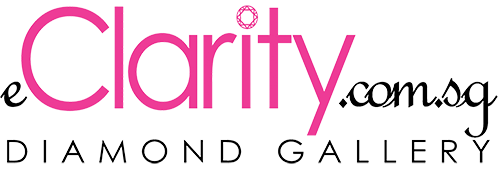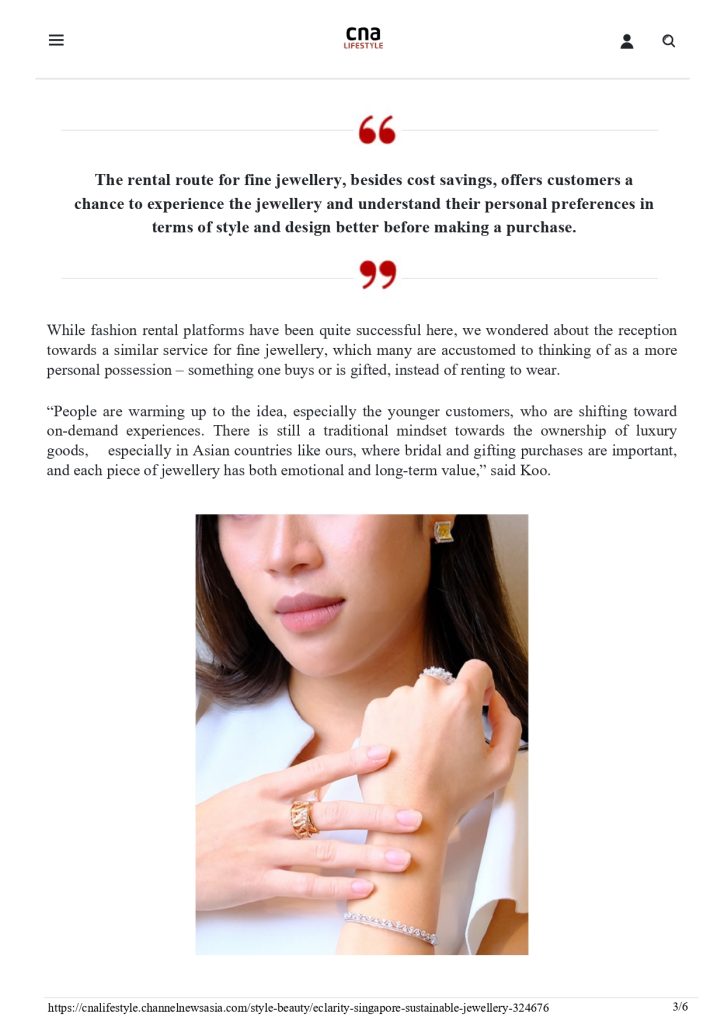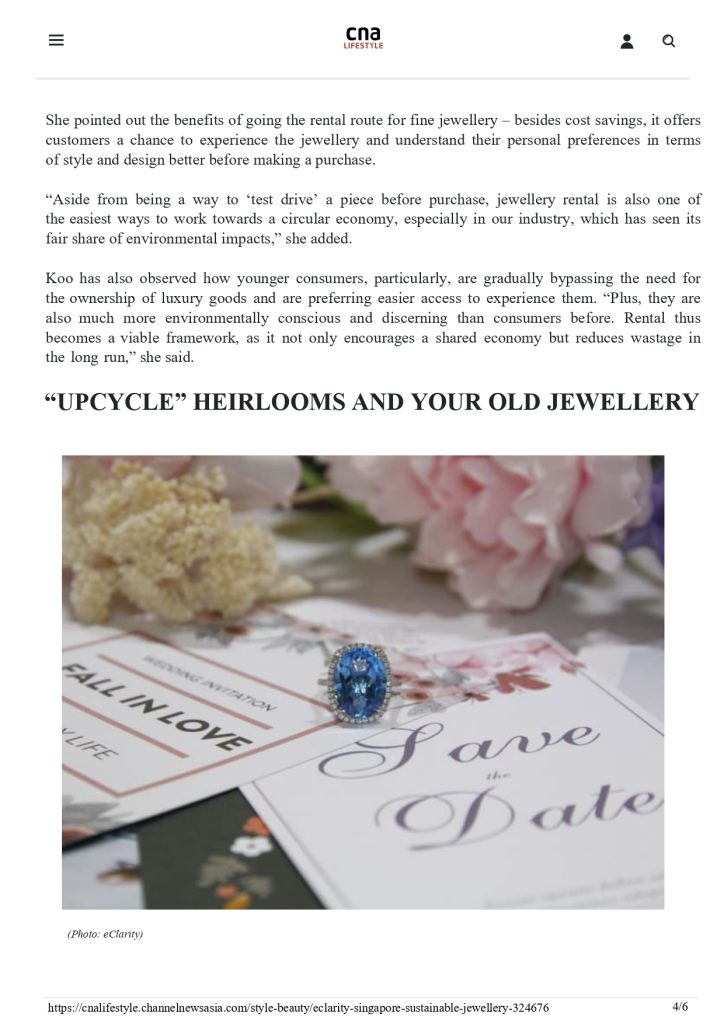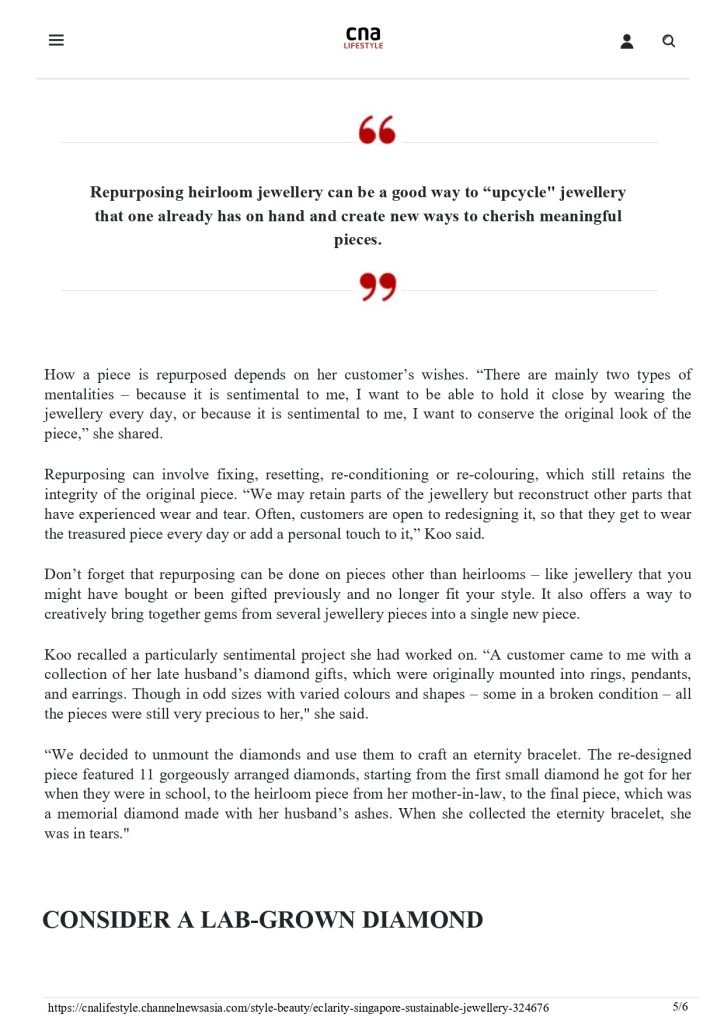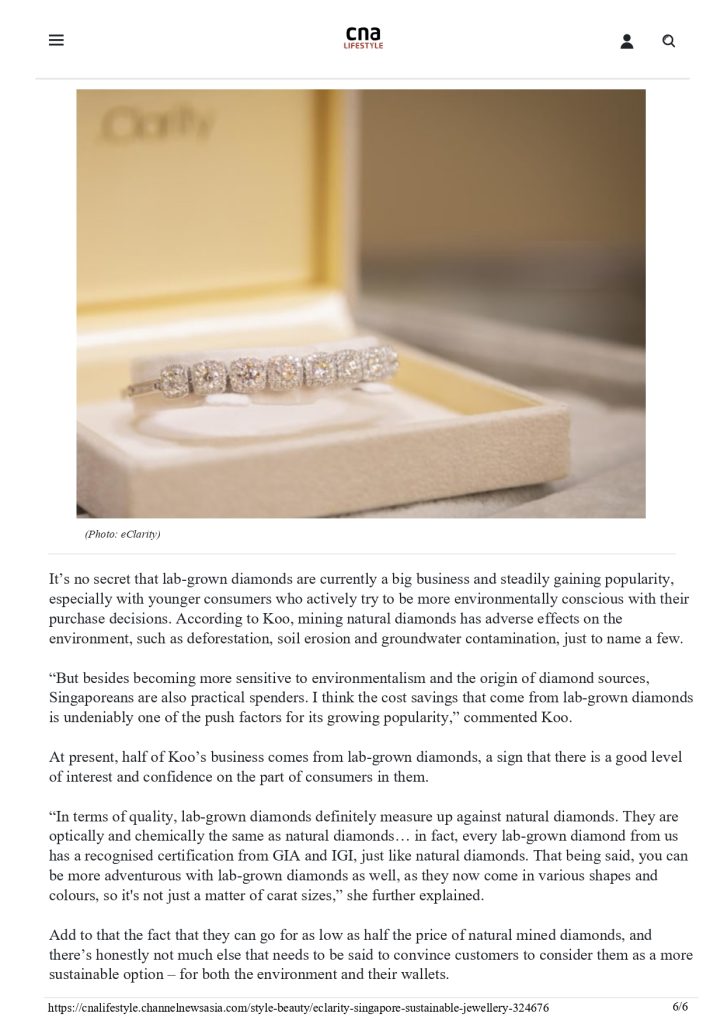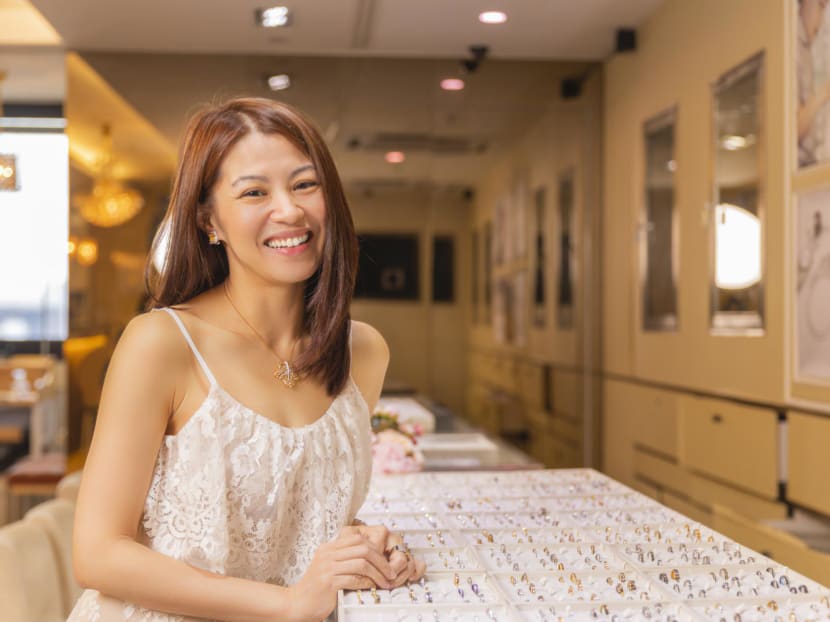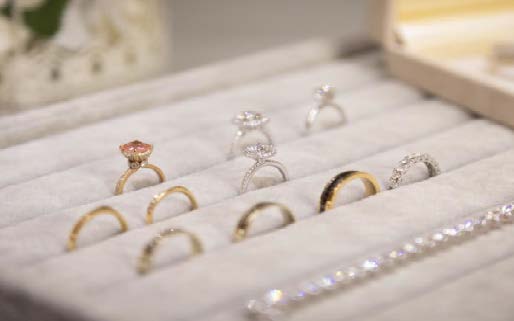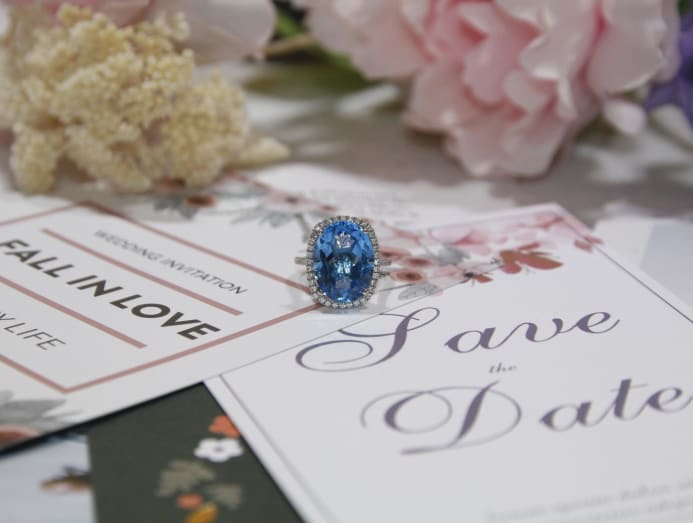The idea isn’t exactly new – there are a number of fashion rental services here, making an extensive range of outfits and designer bags available to those who need them just for a special occasion or two, or those who simply want to enjoy being able to constantly change their wardrobe without buying more bags and clothes.
But a rental service for fine jewellery? It’s not something we’ve heard of yet in Singapore. Even if it exists, it’s likely on a very limited scale. This is why eClarity’s jewellery rental subscription, The Sample Line, which makes more than 1,000 pieces of jewellery available for selection, piqued our interest.
For S$199 a month, the membership entitles a customer to rent one diamond jewellery piece every month. A gala plan is also available at S$690, with which elaborate pieces worth up to hundreds of thousands of dollars can be rented – the perfect solution for a formal do.
The process seems fuss-free, too: The Sample Line is on an app, where designs can be browsed and selected for doorstep delivery. Anyone who wants to select a piece in person can also visit its gallery. In case you’re wondering, all rented-out pieces are cleaned, disinfected and checked carefully for any damage.
While fashion rental platforms have been quite successful here, we wondered about the reception towards a similar service for fine jewellery, which many are accustomed to thinking of as a more personal possession – something one buys or is gifted, instead of renting to wear.
“People are warming up to the idea, especially the younger customers, who are shifting toward on-demand experiences. There is still a traditional mindset towards the ownership of luxury goods, especially in Asian countries like ours, where bridal and gifting purchases are important, and each piece of jewellery has both emotional and long-term value,” said Koo.
She pointed out the benefits of going the rental route for fine jewellery – besides cost savings, it offers customers a chance to experience the jewellery and understand their personal preferences in terms of style and design better before making a purchase.
“Aside from being a way to ‘test drive’ a piece before purchase, jewellery rental is also one of the easiest ways to work towards a circular economy, especially in our industry, which has seen its fair share of environmental impacts,” she added.
Koo has also observed how younger consumers, particularly, are gradually bypassing the need for the ownership of luxury goods and are preferring easier access to experience them. “Plus, they are also much more environmentally conscious and discerning than consumers before. Rental thus becomes a viable framework, as it not only encourages a shared economy but reduces wastage in the long run,” she said.
“UPCYCLE” HEIRLOOMS AND YOUR OLD JEWELLERY
How a piece is repurposed depends on her customer’s wishes. “There are mainly two types of mentalities – because it is sentimental to me, I want to be able to hold it close by wearing the jewellery every day, or because it is sentimental to me, I want to conserve the original look of the piece,” she shared.
Repurposing can involve fixing, resetting, re-conditioning or re-colouring, which still retains the integrity of the original piece. “We may retain parts of the jewellery but reconstruct other parts that have experienced wear and tear. Often, customers are open to redesigning it, so that they get to wear the treasured piece every day or add a personal touch to it,” Koo said.
Don’t forget that repurposing can be done on pieces other than heirlooms – like jewellery that you might have bought or been gifted previously and no longer fit your style. It also offers a way to creatively bring together gems from several jewellery pieces into a single new piece.
Koo recalled a particularly sentimental project she had worked on. “A customer came to me with a collection of her late husband’s diamond gifts, which were originally mounted into rings, pendants, and earrings. Though in odd sizes with varied colours and shapes – some in a broken condition – all the pieces were still very precious to her,” she said.
“We decided to unmount the diamonds and use them to craft an eternity bracelet. The re-designed piece featured 11 gorgeously arranged diamonds, starting from the first small diamond he got for her when they were in school, to the heirloom piece from her mother-in-law, to the final piece, which was a memorial diamond made with her husband’s ashes. When she collected the eternity bracelet, she was in tears.”
CONSIDER A LAB-GROWN DIAMOND
It’s no secret that lab-grown diamonds are currently a big business and steadily gaining popularity, especially with younger consumers who actively try to be more environmentally conscious with their purchase decisions. According to Koo, mining natural diamonds has adverse effects on the environment, such as deforestation, soil erosion and groundwater contamination, just to name a few.
“But besides becoming more sensitive to environmentalism and the origin of diamond sources, Singaporeans are also practical spenders. I think the cost savings that come from lab-grown diamonds is undeniably one of the push factors for its growing popularity,” commented Koo.
At present, half of Koo’s business comes from lab-grown diamonds, a sign that there is a good level of interest and confidence on the part of consumers in them.
“In terms of quality, lab-grown diamonds definitely measure up against natural diamonds. They are optically and chemically the same as natural diamonds… in fact, every lab-grown diamond from us has a recognised certification from GIA and IGI, just like natural diamonds. That being said, you can be more adventurous with lab-grown diamonds as well, as they now come in various shapes and colours, so it’s not just a matter of carat sizes,” she further explained.
Add to that the fact that they can go for as low as half the price of natural mined diamonds, and there’s honestly not much else that needs to be said to convince customers to consider them as a more sustainable option – for both the environment and their wallets.
